The campaigns of the Women’s Institute
The role of the Women's Institute in rural community, food production and healthcare
Over the summer, we were joined by a work experience student, Amelie Roome, who was keen to delve into the archives of the Women’s Institute. Written by Amelie, this blog examines the Institute’s role in the historical and contemporary English countryside.
To a wider audience, the Women’s Institute (WI) is known for “jam and Jerusalem”, due to their history of making jam and the anthem they first sang in 1920s. The Women’s Institute is a voluntary organisation for all women to connect and make a difference. Regardless of stereotypes, the WI focuses on issues close to members in its campaigns in order to promote positive change. Through this they bring together the members of the Women’s Institute to engage in issues that are local, national, and global.
The issues raised by members have to go through an official process to be considered a campaign and be acted upon. It starts on a local level where individuals suggest resolutions which will be discussed at the Annual Meeting. The annual meetings are a key element of the calendar of the Women’s Institute as they confirm which of their resolutions will be made into campaigns. The WI has had many focuses for these campaigns that can fit into themes. These themes include rural and agricultural communities, women’s rights, and health and wellbeing.

Rural communities
Connecting rural communities was an intention at the forefront of the Women’s Institute. This included encouraging local authorities to take advantage of the government housing scheme in 1918. There is also the “Food Matters” campaign to reduce and eliminate the amount of food waste and food poverty. The latter of these is a current campaign. An older campaign that focused on food and agriculture was “Supporting Dairy Farmers”. The effect of this campaign was for supermarkets to offer a small bottle of milk in their food-to-go sections.
We can see the focus on rural communities and agriculture during the First World War and the Second World War. During the Second World War, the Women’s Institute worked on preserving fruit. During the 1939 harvest there was surplus of fruit, so the WI reduced waste by encouraging the production of jam. According to the Market Stall Society minutes, the WI headquarters supplied “£14,000 worth of sugar” directly from the Ministry of Food. In total it was estimated that 450 tons of fruit were prevented from rotting. Several preservation stations were set up in village halls across the country and used the fruit from people’s allotments and gardens.
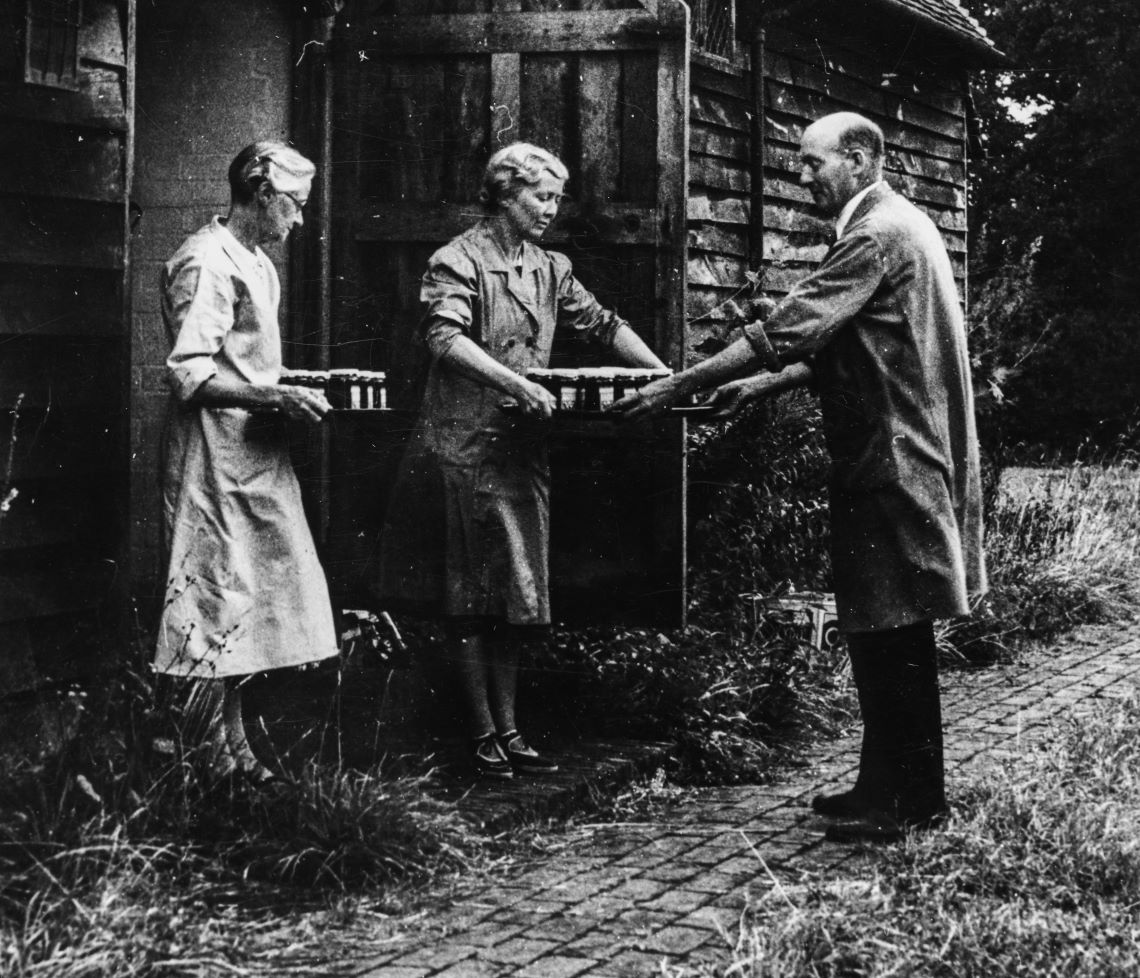
The aim of increasing food production and reducing food waste was also a priority of the Women’s Land Army (WLA). The two organisations were linked by global events and those who ran them. Both the WI and the WLA were set up during the First World War, the WI in 1915 and the WLA in 1917. Not only were they set up during a similar time with a similar purpose, the WLA and the WI were linked together by Lady Denman. Lady Denman was the honorary head of the Women’s Land Army between 1917 to 1919. She also became the first national chairman for the National Federation of Women’s Institutes, which she held for a further 30 years.
Despite these similarities between the two organisations, there are some key differences. The WLA was a paid work force, compared to the WI being free voluntary work. Another difference was that the WLA was organised to ‘replace’ the jobs that men were doing. Due to both the First World War and the Second World War, there was a decrease in the amount of employees working in agriculture as it was a predominantly male sector. In order to keep the necessary rate of food production, more women had to take those roles. Though they were paid less than men for the same jobs, they still did a variety of work, ranging from working in dairies to picking vegetables.
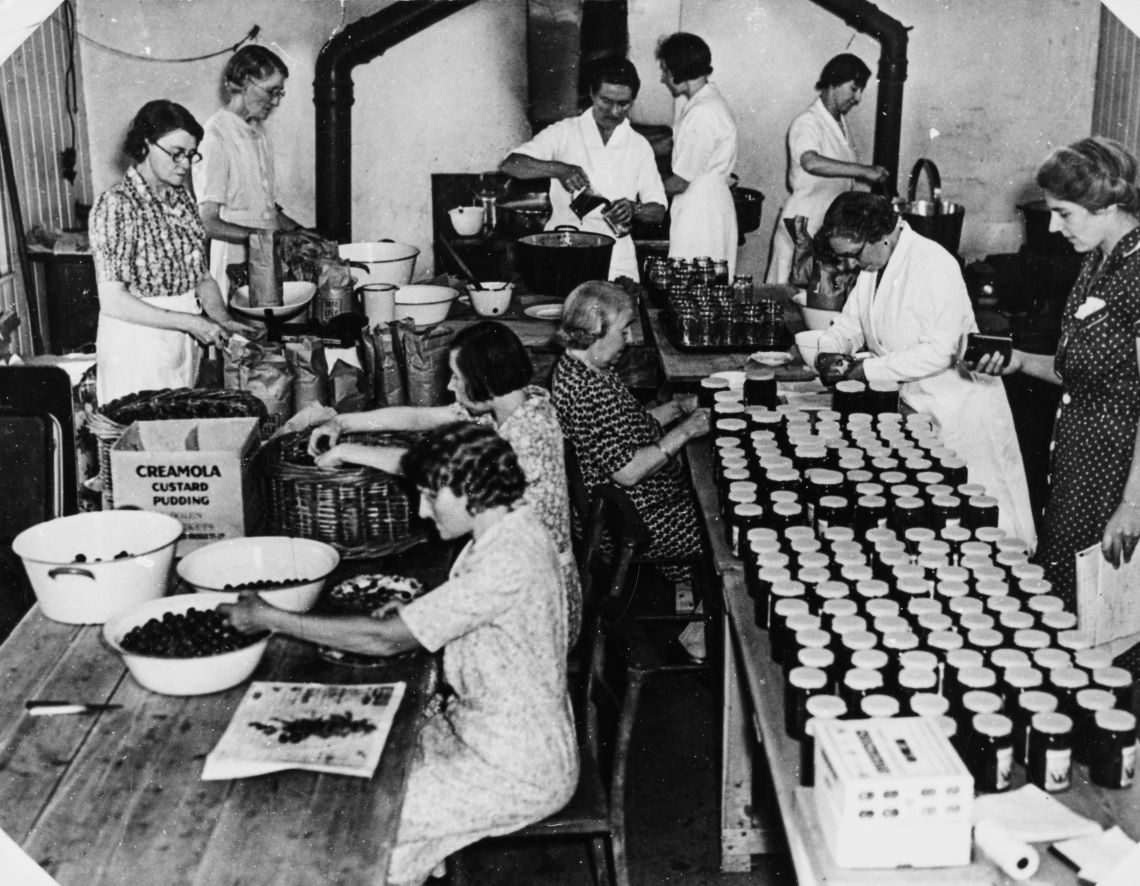
Jam preservation was not the only way that the WI increased food production and reduced food waste. Market stalls were a key feature of the Women’s Institute to distribute some of the food the members produced. Busy market stalls helped to provide fresh fruit, vegetables, and preserves to the local community.
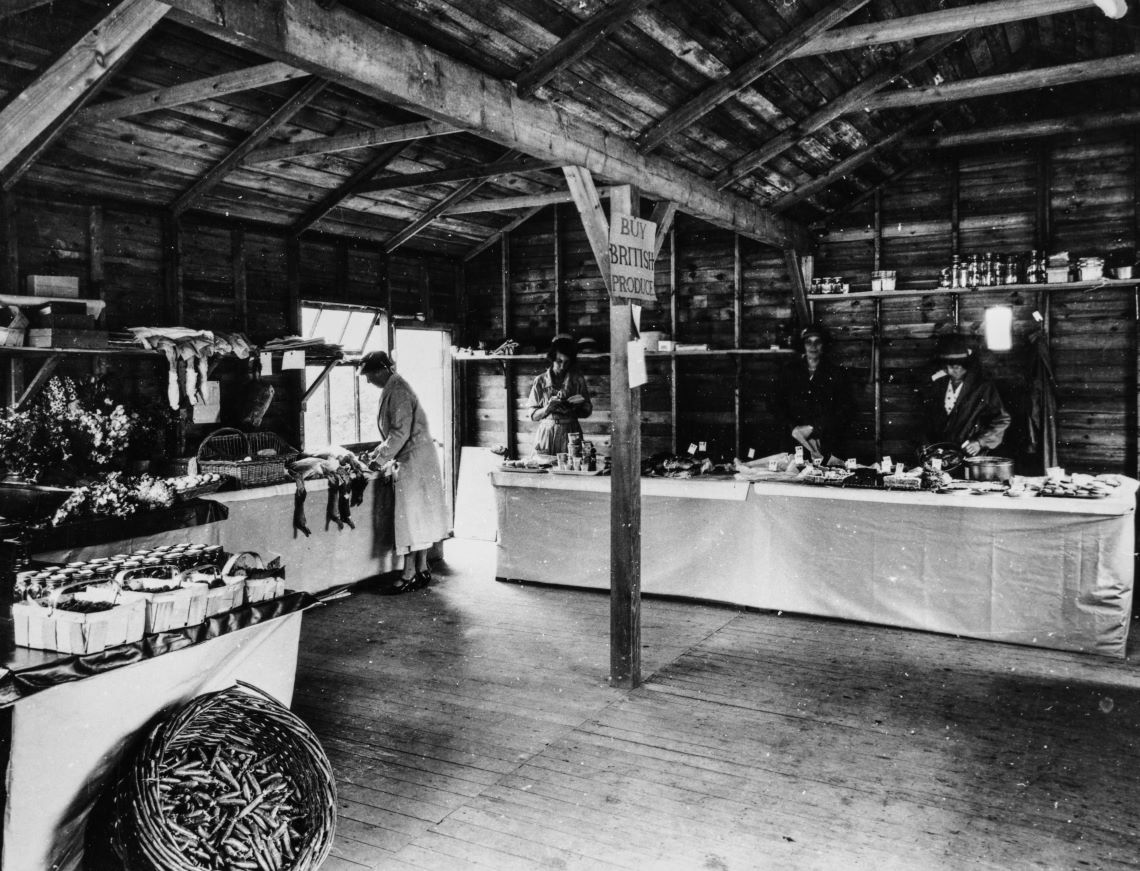
Home-grown British produce was an advantage for the stalls’ advertising; imports were low due to the Second World War. The produce they sold were grown by people in the village or members of the WI themselves. Women were not the only ones aiding these market stalls as men also provided food produce, including some of the older members of the community. In the Berkshire branch, “Suttons were asked to make up a 2/6 packet of vegetable seeds.” This shows the importance of the markets and the impact that they had on the community.
The expansion of market stalls and the increase in the 1960s also shows their longevity. This expansion was aided by close links to the Carnegie United Kingdom Trust, the ministry of Agriculture and the County Councils Association. According to the Berkshire Market Society Meeting Minutes, there were “considerable grants offered by the Carnegie Trust.” This ongoing support demonstrates the importance of the WI market stalls.
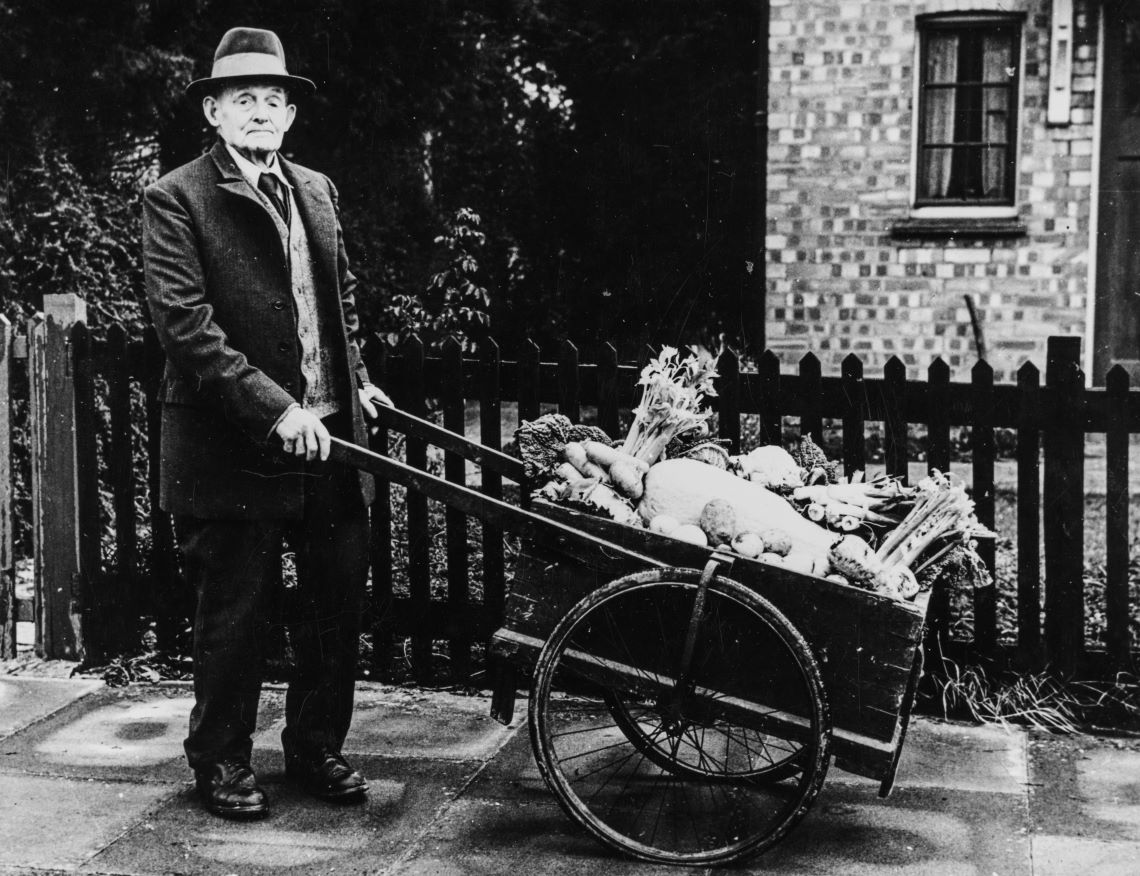
The Market Stall Societies also had a purpose of educating. There are several references “asking them to receive a speaker at the monthly meetings of the Women’s Institute who would tell them of the benefits of both to producers and purchasers by sending to, and buying from the stalls.” In some years, like 1936, there were fewer regular meetings and more Producers Meetings.
Modern health support
The Women’s Institute continued to increase connections in rural communities through their mental health campaigns. This includes the current campaign “Make Time for Mental Health.” This campaign was launched in 2018 to help with parity between mental and physical health. Along with the campaign “Link Together to Alleviate Loneliness”, which was set up in 2017, it has the aim to get people the social support that they need. They also pick up on the theme of increasing community in rural areas. The effects of this campaign includes members volunteering and organizing the Great Get Together. There were wider impacts of this campaign such as the National Federation of Women’s Institutes joining the Loneliness Action Group.
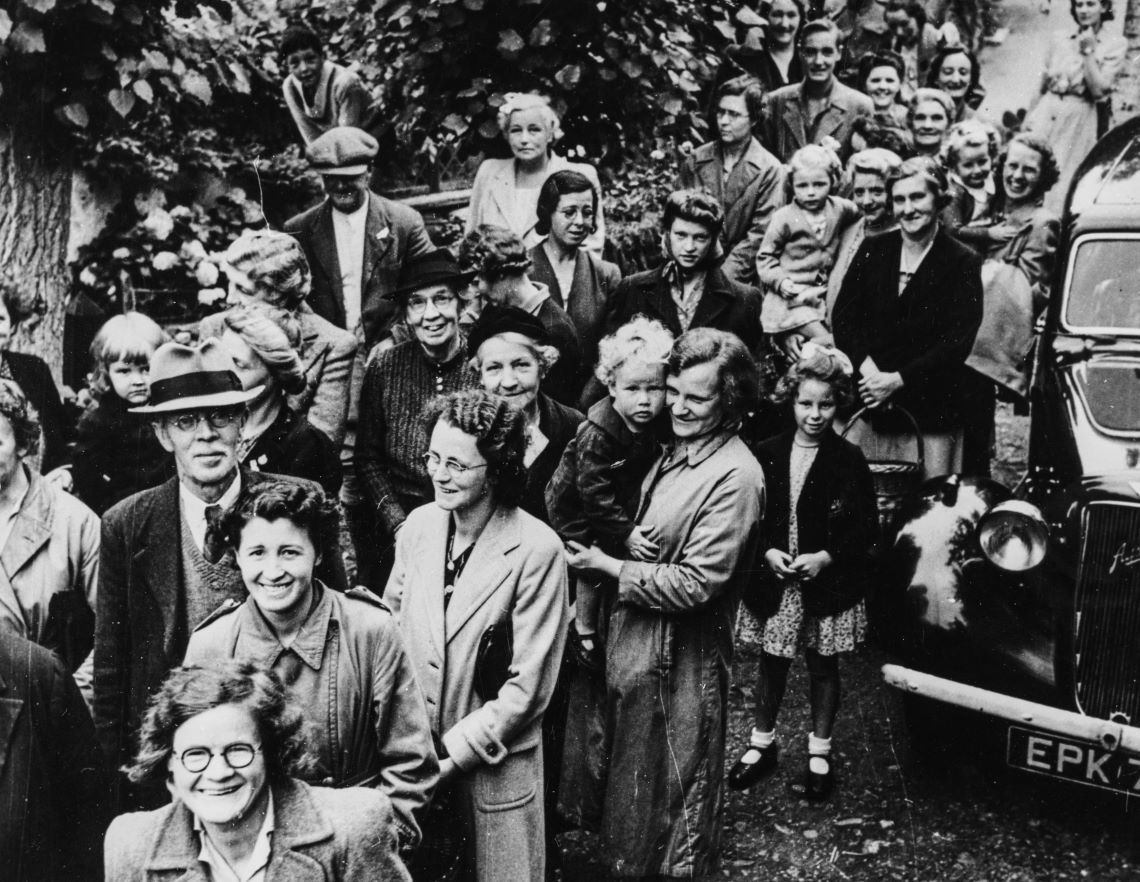
Another focus of the Women’s Institute’s campaigns was been education about health and wellbeing. One facet of health that the campaigns is cervical screening. Their first campaign about cervical screening was in 1964 to increase the amount of facilities. It also aimed to educate women about the facilities available. The most recent iteration of this campaign is called “5 Minutes that Matter.” The aim of this campaigns is increasing the attendance of smear tests as it is at a 21-year low.
The Women’s Institute may continue to have stereotypes of jam and Jerusalem, but it has made more of an impact than it is given credit for. From aspects of health including cervical screening access and education, to decreasing the amount of food waste. Since the WI arrived to the UK from Canada in 1915, the three main aims were women’s education, reinvigorating rural communities, and increasing food production whilst reducing food waste. They have carried this through the 108 years that they have been in the United Kingdom. We can see that the WI has resulted in changes, both big and small, as a result of the campaigns they ran.
The MERL holds a small archive of Women’s Institute documents, including the minute books quoted in the article. Click here to find out more.
Bibliography
Berkshire WI Market Stalls Society, Minute Book (2), December 1935 to July 1945, (MERL CR WI AD 1/5)
Stamper, A. (2007) “The WI and the Women’s Suffrage Movement” , The Women’s Institute
